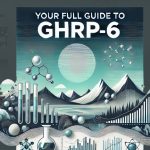Body Protective Compound 157, or just BPC 157, is a synthetic peptide comprised of 15 amino acid chains and was isolated from a molecule secreted by the human stomach’s gastric juice.
BPC 157 is currently studied for its potential positive effects on several organ systems, notably the brain, body, and gut for its healing properties, earning it the title of the “Wolverine” peptide.
While BPC 157 doesn’t give you adamantium claws or the tall, good-looking, and charming features of our Aussie friend Hugh Jackman, it does give you the ability to heal and recover from your injuries quicker.
BPC 157 was discovered by Predrag Sikirić, a Croatian scientist, in the early 1990s. You may also know BPC 157 from its other names like Pentadecapeptide, PL-14736, PLD 116, PL-10, and bepecin.
Note: This is relevant info as most of the studies we’re going to explore will mention these names.
How It Works
Most studies show that BPC-157’s benefits have been particularly in animal trials, and even suggesting that the peptide has great potential in human trials, but how does it work?
While our current science doesn’t fully understand how it works (for now), BPC 157 particularly affects our gut-brain axis, a network of nerves that controls how our digestive and central nervous system interacts.
BPC 157 also boosts growth hormone receptors, anabolic receptors, and vascular endothelial growth factor (VEGF) through the FAK-paxillin pathway – a pathway that influences how cells stick to surfaces and move around.
What’s more remarkable about this peptide is that BPC 157 seems to boost nitric oxide levels in low dosages. Boosted nitric oxide levels open up your blood vessels and allow more blood, oxygen, and nutrients to enter your cells.
This physiological process allows your tissue regeneration, blood flow, and inflammation reduction rate to significantly improve immediately according to some researchers.
According to the results of a 2011 study published in the Journal of Applied Physiology BPC can take effect after just one application, and many researchers may see an enhanced effect after long-term usage.
For safety concerns, while BPC 157 could honestly use some more rigorous human clinical trials, several studies have proven that BPC 157 is safe to use and has no apparent side effects or toxicity.
Here are some health benefits and positive effects associated with BPC 157 usage: systematically enhances healing in every
Injury Healing
BPC 157 is widely known for its ability to facilitate healing faster as it can accelerate wound healing, and tendon repair, and increase collagen production through activation of the growth hormone receptors while reducing pain.
Below are some additional benefits and applications of BPC 157 for its healing effect:
Tendon Healing
https://www.facebook.com/groups/sarms.peptides.nootropics/permalink/1553127562209302
In a 2011 in-vitro study, researchers took fibroblasts (cells located in your Achilles tendon) from rats and dipped them in solutions containing either BPC 157 or without. While BPC 157 did not increase the fibroblasts’ strength, it did promote healing better than non-treated cells due to the presence of more growth hormone receptors.
In a 2008 comparative study on the effects of BPC 157 and methylprednisolone on the early recovery of rats with cut Achilles tendons, 72 rats underwent surgery wherein their Achilles tendon was severed near the bone.
The treatments were administered separately to different groups of rats.
BPC 157 was given at a dose of 10 micrograms, methylprednisolone at 5 milligrams, and normal saline (as a control) at 5 milliliters, all through intraperitoneal injections ( a common method of administering drugs to rodents) once a day, starting 30 minutes after surgery and ending 24 hours before analysis.
The results showed that BPC 157 improved functional recovery by reducing inflammation (measured by decreased myeloperoxidase activity and inflammatory cell influx) and increasing the formation of new blood vessels.
Methylprednisolone also reduced inflammation but had a negative effect on new blood vessel formation and did not improve early functional recovery.
In simpler terms: BPC 157 helped the rats recover faster from Achilles tendon injury by reducing inflammation and promoting the growth of new blood vessels.
While it is not noted whether BPC 157 helped the rats walk better after their surgery, a similar study noted that the peptide helped stronger tendon structure (biomechanically), better function, and enhanced tissue formation, which can improve walking post-injury.
Brain-Related Injuries
As BPC157 induces healing in various tissues, it can also promote brain and nerve healing after traumatic brain injuries in rats, aid in repairing the brain and reducing swelling after a hemorrhagic stroke, and protect the brain from seizures caused by an insulin overdose.
Expanding on traumatic brain injuries, in a 2010 experiment on the effectivity of BPC 157 in treating muscle crush injuries and traumatic brain injuries (TBI), mice were subjected to TBI by a falling weight and were administered BPC 157 either before or immediately after the injury.
While this is certainly distasteful, the research concluded that BPC 157 reduced the severity of traumatic brain lesions, such as bleeding in the brain and brain lacerations, and improved brain swelling.
Moreover, when given before injury, it improved the outcome and reduced mortality rates in mice subjected to different levels of force. When given after injury, it still had beneficial effects, especially for less severe force impacts.
For more severe impacts, the timing of the BPC 157 administration was crucial. Administering it shortly before or after injury improved outcomes, suggesting its potential as a treatment for traumatic brain injuries.
BPC 157 for Gut Health
BPC 157 is mainly used for gut health benefits as traditionally treating the gut can be quite challenging. According to a 1994 comparative study, BPC 157 has beneficial effects on our gastrointestinal tract due to its ability to protect the endothelial cells lining the blood vessels.
In the study, BPC 157 was compared to several other medications (bromocriptine, amantadine, famotidine, cimetidine, and somatostatin) in three different ulcer models in rats.
The results showed that only BPC 157 dose-dependent protection in one model and partial positive effects in another, while consistently preventing ulcers in all of the tested models.
Below are some additional benefits and applications of BPC 157 for gut health:
GERD – Gastroesophageal reflux disease, or GERD, is a condition where stomach acid and other contents flow backward into the esophagus.
A 2003 animal study evaluating the effect of BPC 157 on 50 adult rats with reflux laryngitis showed that rats with the peptide had better results in terms of the health of their laryngeal mucosa (the lining of their voice box) compared to the control group.
Inflammatory Bowel Disease – BPC 157 can also treat inflammatory bowel disease (IBD) as studies show that they can significantly promote healing and complications in the intestines.
In a 2007 animal study investigating the healing effects of BPC 157 on ileoileal anastomosis (a surgery that connects two parts of your small intestine) in rats, the researchers found that those treated with the peptide had their wounds healed better compared to those not receiving the treatment.
Furthermore, the treated rats had fewer complications, better blood flow, and less swelling. As the healing process progressed, the treated rats showed improvements in tissue structure and strength, suggesting that BPC 157 helped in the overall healing of the surgical site.
Drug-related Damages – While NSAIDs are commonly used to relieve pain, reduce inflammation, and lower fever, they can also cause irritation and damage to the lining of the stomach and intestines. This leads to stomach ulcers, heartburn, lesions, bleeding and perforations.
A 2010 review highlighted BPC 157 usage in protecting the stomach from damage caused by alcohol and anti-inflammatory drugs which contributes to overall gastrointestinal health.
Furthermore, Animal studies have shown that BPC 157 may be able to impart a positive effect against lesions brought by NSAID damage, as well as apply benefits to the gut, brain, and liver, in rats.
On an unrelated note, BPC 157 has also been shown to protect against excessive bleeding and low platelet counts caused by blood-thinning medications such as heparin, warfarin, or aspirin – improving survival rates in rats.
Furthermore, a 2016 animal study examined the effects of BPC 157 on muscle paralysis induced by succinylcholine, a medication used during anesthesia.
Results showed that whether given before or after succinylcholine administration, BPC 157 was able to reduce muscle paralysis and other related complications in rats, prevent hyperkalemia (high levels of potassium in the blood), arrhythmias (irregular heartbeats), and muscle damage caused by succinylcholine.
Improves Mental Health
Depression
BPC 157 can possibly positively influence depression and anxiety similarly to antidepressant drugs, according to a 2000 comparative study on the antidepressant effect of BPC 157 versus conventional antidepressants.
In this study, researchers used two different tests to measure depression-like behavior in rats: the forced swimming test and chronic unpredictable stress.
- In the forced swimming test, rats treated with BPC 157 showed less immobility, which is a sign of improved mood, similar to rats treated with conventional antidepressants like imipramine.
- In the chronic unpredictable stress test, rats were exposed to stressful situations, and those treated with BPC 157 consistently showed improvements in mood compared to rats treated with conventional antidepressants. BPC 157 was also effective even after a shorter treatment period, unlike conventional antidepressants, which required a longer period to show effects.
Overall, the study suggests that BPC 157 is better than putting the rats on conventional antidepressants, making it a potential candidate for further research in treating depression.
Additionally, BPC 157 can protect the brain against serotonin toxicity brought by serotonin syndrome. This life-threatening condition occurs only when there’s too much serotonin in the body, which could be exacerbated by medication interactions.
In a 2005 study on how BPC 157 affects serotonin syndrome in rats, the researchers discovered that the peptide reduced the severity and duration of serotonin syndrome symptoms, such as hyperthermia and abnormal movements.
Furthermore, BPC 157 specifically targeted certain serotonin receptors in the brain, safely reducing the symptoms brought serotonin syndrome without causing any negative effects on its own.
Parkinson’s Disease
According to a 1999 animal clinical trial on mice, BPC 157 can also help with Parkinson’s disease.
The results showed that BPC 157 significantly improved symptoms associated with Parkinson’s disease, such as tremors and movement difficulties, and even prevented lethal outcomes in some cases.
Researchers also discovered that BPC 157 reduced stomach lesions caused by Parkinsonian agents, which suggests that BPC 157 can be a possible therapeutic option for Parkinson’s disease and stomach-related issues in the future.
Muscle Building and Recovery
BPC 157 has been shown to have potential benefits for muscle building and recovery as it can promote tissue repair and activate certain cells that perform these repairs like human growth hormone (HGH) and insulin-like growth factor 1 (IGF-1)
IGF-1 is responsible for hyperplasia (expanding of your cells) like anabolic steroids, but unlike steroids that only inflate your muscles, IGF-1 also increases the number of cells present.
While the peptide by itself may not directly lead to muscle hypertrophy, it’s known to facilitate quicker recovery by enhancing cell survival and migration. This can lead to a stronger, more robust muscle structure and potentially boost muscle resilience and stamina over time.
Administration Method
BPC 157 can be taken orally, subcutaneously injected, and nasally. Animal studies suggest common research dosages amount to 1 μg/kg to 10 ng/kg in rats.
https://www.facebook.com/groups/bpc157/permalink/1551555315418088
We have noticed that most researchers are divided on what’s the best administration method for BPC 157 – is it orally, subcutaneously, or nasally?
Some researchers even refrain from using BPC 157 orally as it gets broken down in your gut. However, BPC is a peptide already found in your gut.
Suppose you take something out of its natural habitat and put it back, will it survive?
Definitely, it could even survive for 24 hours.
Furthermore, BPC can theoretically be taken as a nasal spray its molecular weight is between 900-1600 Daltons. For context, the uppermost limit for intranasally-delivered peptides is only up to 6000 Daltons.
But according to several studies, it really doesn’t matter.
- In a 2010 study published in the Journal of Orthopaedic Research, researchers found that BPC 157 was highly effective in healing ligament injuries in rats, regardless of administration method.
- In another study published in 2013 in the Medical Science Monitor Basic Research, BPC 157 was again, highly effective in healing damaged smooth muscle tissue in the gastrointestinal system, regardless of administration method.
Storage
For unopened BPC 157 peptide vials, it’s generally safe to store them at 4°C or 39.2°F for a few days.
To extend BPC’s shelf life once the vial is open, you have to keep it around 2-8°C (or 35.6-46.4°F) in the fridge at all times.
This should last you around 2-8 weeks before the peptide goes bad or until the manufacturer’s “best-by” date. Avoid repeatedly freezing and thawing the peptides to prevent degrading them.
Side Effects
BPC-157 is mostly on the safer side as shown in clinical animal trials for inflammatory bowel disease, and intestinal anastomosis therapy, and is currently undergoing trials for multiple sclerosis.
However, there are still potential side effects when used for extended periods or administered to human subjects with pre-existing conditions. Common side effects may include:
- Nausea
- Diarrhea
- Dizziness
- Mild headaches
- Blood Pressure fluctuations
Additionally, there are two major things to note:
One, corticosteroids (or anti-inflammatory steroids) may potentially reduce BPC-157’s ability to heal muscles.
Two, there is no conclusive research suggesting that BPC 157 contributes to or causes cancer growth apart from one study indicating that the peptide has angiogenic properties – a process associated with wound healing, tissue repair, and tumor growth.
With this, we cannot conclude a definitive stance as there are some studies suggesting a possible increase in cancer risk with BPC 157 usage, but there are also studies that show BPC 157 can be a potential therapeutic option in cancer treatment.
Other Things to Consider
Like most medications, you need a doctor’s prescription to obtain BPC 157 as it is not FDA-approved due to a lack of clinical trials. The World Anti-Doping Agency (WADA) also classified BPC 157 as “not approved for human use.”
However, BPC 157 is still classified under section 503A of the Federal Food, Drug, and Cosmetic Act. This means some compounding pharmacies can still honor prescriptions based on the needs of specific patients but still follow certain quality standards outlined in the United States Pharmacopeia (USP) and other guidelines.
Verdict: Should You Use BPC 157?
So, is BPC 157 worthy of the title as the “Wolverine” peptide? Preliminary evidence is in favor of this claim as BPC 157 can speed up healing in several areas of the body, and possibly more.
We honestly do not know the full potential of BPC 157 (yet) as most of the research was from animal studies and more human research is needed to solidify this.
If you’re considering using BPC 157 in your research, it may be beneficial to stack it with an HGH-releasing peptide like CJC-1295. Stacking these substances together could potentially enhance their regenerative properties through a synergistic effect.
However, it’s essential to conduct thorough research and consult with medical professionals before experimenting with peptides or any other substances for research purposes.
As always, if you liked this guide, feel free to check out our other articles!
FAQ
When does BPC 157 kick in?
BPC 157 kicks in immediately. According to specific studies about BPC 157 on ligament healing, it works best for acute injuries– or injuries that have just happened.
Is it better to inject BPC 157 at the site of the injury?
According to several studies mentioned before, it really doesn’t matter. BPC 157 is effective in tissue healing and gut repair, regardless of the administration method.
We believe that this false efficacy is due to a “placebo effect.”
For example: Your research subject has shoulder pain, and you inject BPC 157 directly at the site of injury. As the injection induces mild inflammation and pain at the site, your body’s response is to heal itself.
Can you use BPC 157 for dogs?
You can possibly use BPC 157 for dogs in your research. There are thousands of animal trials conducted on mice, rats, rabbits, and dogs that have reported no abnormal changes or toxicity in repeated-dose evaluations.
According to a 2020 study, the only side effects of BPC 157 in dogs were slightly lower creatinine levels and mild irritations.
Can you stack BPC 157 and TB500?
https://www.facebook.com/groups/sarms.peptides.nootropics/permalink/1502333087288750
Some researchers and influencers stack TB-500 and BPC 157 alongside an HGH-inducing peptide such as Sermorelin, Tesamorelin, GHK-Cu, or CJC-1295 to maximize regenerative properties.
The idea of stacking them is to get a “synergistic effect” that facilitates healing quicker compared to taking them alone.







